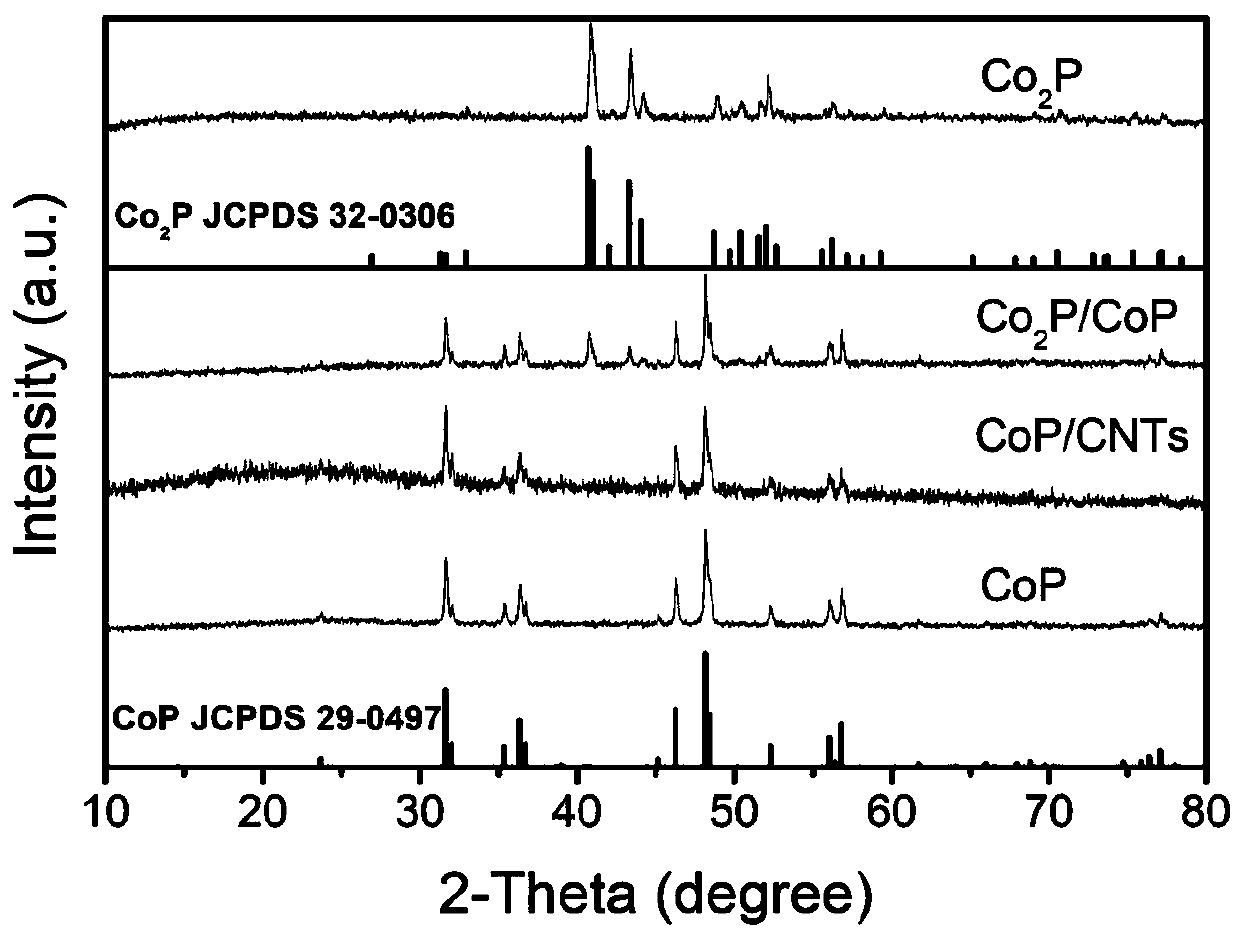Nitrogen-doped cobalt phosphide/nanocarbon compound material and preparation method and application thereof
A technology of nano-carbon materials and composite materials, which is applied in the field of hydrogen production by electrolysis of water, can solve the problems of unsatisfactory hydrogen production performance, easy generation of phosphine and toxic gases, etc., and achieve excellent hydrogen production performance, improve hydrogen production performance, and improve The effect of stability
- Summary
- Abstract
- Description
- Claims
- Application Information
AI Technical Summary
Problems solved by technology
Method used
Image
Examples
Embodiment 1
[0057] Step (1): Synthesis of polyvinylphosphonic acid: Polyvinylphosphonic acid was synthesized according to the method reported by Millaruelo et al. Weigh 5g of vinyl acid monomer and 0.15g of azobisisobutyronitrile into a 100ml round bottom flask, then add 28ml of ethyl acetate as a solvent into the flask, cover with a rubber stopper, and place the system in liquid nitrogen quickly, The reaction system was evacuated under the condition of liquid nitrogen freezing, the temperature was raised to normal temperature and filled with dry nitrogen, and after repeated operations for 3-5, the temperature of the reaction system was raised to 60° C. for 6 hours of reaction. After the reaction, the reaction solvent was spin-dried, and then an appropriate amount of water was added to dissolve the sample, and then dialyzed in water, changing the water every 2 hours, dialyzed for two days, and freeze-dried to obtain polyvinylphosphonic acid (white solid).
[0058] Step (2): Preparation of...
Embodiment 2
[0067] Compared with Example 1, the difference is only that in step (2), the amount of cobalt chloride hexahydrate is 1.1g (P / Co molar ratio is 1:1), and through step (3) calcining, obtain cobalt phosphide / Carbon in situ composites without step (4) carbon composite. The XRD spectrum pattern of the product that this case obtains is attached figure 1 As shown, by comparing with the standard map, it shows that the Co 2 P / CoP. When the current density is 10mAcm -2 , the material has an overpotential of 151mV and a Tafel slope of 109mV dec -1 .
Embodiment 3
[0069] Compared with Example 1, the difference is only that in step (2), the amount of cobalt chloride hexahydrate is 2.2g (P / Co molar ratio is 1:2), and through step (3) calcining, obtain cobalt phosphide / Carbon in situ composites without step (4) carbon composite. The XRD spectrum pattern of the product that this case obtains is attached figure 1 As shown, by comparing with the standard map, it shows that the Co 2 p. When the current density is 10mAcm -2 , the material has an overpotential of 220mV and a Tafel slope of 115mV dec -1 .
PUM
| Property | Measurement | Unit |
|---|---|---|
| Current density | aaaaa | aaaaa |
Abstract
Description
Claims
Application Information
 Login to View More
Login to View More - R&D
- Intellectual Property
- Life Sciences
- Materials
- Tech Scout
- Unparalleled Data Quality
- Higher Quality Content
- 60% Fewer Hallucinations
Browse by: Latest US Patents, China's latest patents, Technical Efficacy Thesaurus, Application Domain, Technology Topic, Popular Technical Reports.
© 2025 PatSnap. All rights reserved.Legal|Privacy policy|Modern Slavery Act Transparency Statement|Sitemap|About US| Contact US: help@patsnap.com



